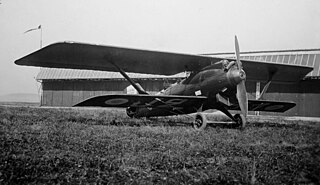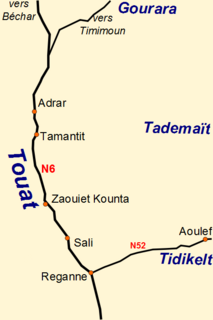Related Research Articles

Nitrogen is the chemical element with the symbol N and atomic number 7. It was first discovered and isolated by Scottish physician Daniel Rutherford in 1772. Although Carl Wilhelm Scheele and Henry Cavendish had independently done so at about the same time, Rutherford is generally accorded the credit because his work was published first. The name nitrogène was suggested by French chemist Jean-Antoine-Claude Chaptal in 1790 when it was found that nitrogen was present in nitric acid and nitrates. Antoine Lavoisier suggested instead the name azote, from the Greek ἀζωτικός "no life", as it is an asphyxiant gas; this name is instead used in many languages, such as French, Italian, Russian, Romanian and Turkish, and appears in the English names of some nitrogen compounds such as hydrazine, azides and azo compounds.
The gas laws were developed at the end of the 18th century, when scientists began to realize that relationships between pressure, volume and temperature of a sample of gas could be obtained which would hold to approximation for all gases.

An aerosol is a suspension of fine solid particles or liquid droplets in air or another gas. Aerosols can be natural or anthropogenic. Examples of natural aerosols are fog, mist, dust, forest exudates and geyser steam. Examples of anthropogenic aerosols are particulate air pollutants and smoke. The liquid or solid particles have diameters typically less than 1 μm; larger particles with a significant settling speed make the mixture a suspension, but the distinction is not clear-cut. In general conversation, aerosol usually refers to an aerosol spray that delivers a consumer product from a can or similar container. Other technological applications of aerosols include dispersal of pesticides, medical treatment of respiratory illnesses, and combustion technology. Diseases can also spread by means of small droplets in the breath, also called aerosols.

The ideal gas law, also called the general gas equation, is the equation of state of a hypothetical ideal gas. It is a good approximation of the behavior of many gases under many conditions, although it has several limitations. It was first stated by Benoît Paul Émile Clapeyron in 1834 as a combination of the empirical Boyle's law, Charles's law, Avogadro's law, and Gay-Lussac's law. The ideal gas law is often written in an empirical form:

Terrell County is a county in the U.S. state of Texas. As of the 2010 census, its population was 984, making it the eighth-least populous county in Texas, and the 37th-least populous county in the nation. Its county seat is the census-designated place of Sanderson; no incorporated municipalities are in the county. The county was named for Alexander W. Terrell, a Texas state senator.

The Karakum Desert, also spelled Kara-Kum and Gara-Gum, is a desert in Central Asia. Its name means Black Sand in Turkic languages, in reference to the dark soil that lies beneath the sandy surface of much of the desert. It occupies about 70 percent, or 350,000 km², of the area of Turkmenistan.

Charles's law is an experimental gas law that describes how gases tend to expand when heated. A modern statement of Charles's law is:
When the pressure on a sample of a dry gas is held constant, the Kelvin temperature and the volume will be in direct proportion.
Avogadro's law is an experimental gas law relating the volume of a gas to the amount of substance of gas present. The law is a specific case of the ideal gas law. A modern statement is:
Avogadro's law states that "equal volumes of all gases, at the same temperature and pressure, have the same number of molecules."
For a given mass of an ideal gas, the volume and amount (moles) of the gas are directly proportional if the temperature and pressure are constant.

During World War I, the Second Battle of Ypres was fought from 22 April – 25 May 1915 for control of the strategic Flemish town of Ypres in western Belgium. The First Battle of Ypres had been fought the previous autumn. The Second Battle of Ypres was the first mass use by Germany of poison gas on the Western Front. It also marked the first time a former colonial force defeated a European power in Europe.

The Breguet 19 was a light bomber and reconnaissance aircraft, also used for long-distance flights, designed by the French Breguet company and produced from 1924.

Tuat, or Touat, is a natural region of desert in central Algeria that contains a string of small oases. In the past, the oases were important for caravans crossing the Sahara.
Archaos is a French contemporary circus created by Pierrot Bidon in 1986. It began as an alternative, theatrical circus without animals, featuring dangerous stunts like chainsaw juggling, fire breathing, wall of death, etc. The company is considered a pioneer of the contemporary circus. Today, Archaos is based in Marseille, France and is a designated Pôle National des Arts du Cirque. Archaos is also the main organiser of the Biennale Internationale des Arts du Cirque, the world's largest contemporary circus festival.

In Salah or officially Aïn Salah is the oasis town in central Algeria that is the capital of the In Salah Province and In Salah District. It was once an important trade link of the trans-Saharan caravan route. As of the 2008 census it has a population of 32,518, up from 28,022 in 1998, with an annual growth rate of 1.5%, the lowest in the province. The village is located in the heart of the Sahara Desert region of northern Africa. The name In Salah comes from the term "good well" although the water is known for its rather unpleasant, salty taste.

Mong Kok Computer Centre is a shopping mall for computers and computer related products in Nelson Street, in Mong Kok, Hong Kong.

Konnagar is a city and a municipality of Hooghly district in the state of West Bengal in India. It is under Uttarpara police station in Serampore subdivision. It is a part of the area covered by Kolkata Metropolitan Development Authority (KMDA).

Forkhead box protein E1 is a protein that in humans is encoded by the FOXE1 gene.

Concentrated solar power systems generate solar power by using mirrors or lenses to concentrate a large area of sunlight onto a receiver. Electricity is generated when the concentrated light is converted to heat, which drives a heat engine connected to an electrical power generator or powers a thermochemical reaction.

The Ivanpah Solar Electric Generating System is a concentrated solar thermal plant in the Mojave Desert. It is located at the base of Clark Mountain in California, across the state line from Primm, Nevada. The plant has a gross capacity of 392 megawatts (MW). It deploys 173,500 heliostats, each with two mirrors focusing solar energy on boilers located on three 459 ft tall solar power towers. The first unit of the system was connected to the electrical grid in September 2013 for an initial synchronisation test. The facility formally opened on February 13, 2014. In 2014, it was the world's largest solar thermal power station.
The canton of Bourg-Saint-Andéol is an administrative division of the Ardèche department, southern France. Its borders were modified at the French canton reorganisation which came into effect in March 2015. Its seat is in Bourg-Saint-Andéol.
Xenon tetrachloride is an unstable inorganic compound with a chemical formula XeCl4. Unlike other noble-gas/halide compounds, it cannot be synthesized by simply combining the elements, by using a more-active halogenating agent or by substitution of other halides on tetrahaloxenon compounds. Instead, a decay technique can be used, starting with K129ICl4. The iodine-129 atom of the 129
ICl–
4 covalent cluster is radioactive and undergoes beta decay to become xenon-129. The resulting XeCl4 molecule has a square planar molecular geometry analogous to xenon tetrafluoride.
References
It is mentioned in Arthur Mee's 2 volume work 1000 Heroes: Immortal men & women of every age & every land. Page 284 and in William B. Seabrook's Air Adventure.
Coordinates: 22°19′07″N1°06′57″E / 22.3185°N 1.1157°E
| This Algeria location article is a stub. You can help Wikipedia by expanding it. |